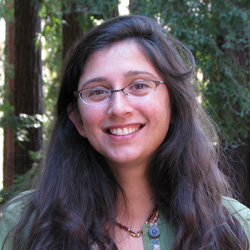Quantum computers could overtake classical ones within 2 years, IBM 'benchmark' experiment shows

Quantum computers could beat classical ones at answering practical questions within two years, a new experiment from IBM computers shows. The demonstration hints that true quantum supremacy, in which quantum computers overtake classical digital ones, could be here surprisingly soon.
"These machines are coming," Sabrina Maniscalco, CEO of Helsinki-based quantum-computing startup Algorithmiq, told Nature News.
In the new study, described Wednesday (June 14) in the journal Nature, scientists used IBM's quantum computer, known as Eagle, to simulate the magnetic properties of a real material faster than a classical computer could. It achieved this feat because it used a special error-mitigating process that compensated for noise, a fundamental weakness of quantum computers.
Traditional silicon-chip-based computers rely on "bits" that can take just one of two values: 0 or 1.
By contrast, quantum computers employ quantum bits, or qubits, that can take on many states at once. Qubits rely on quantum phenomena such as superposition, in which a particle can exist in multiple states simultaneously, and on quantum entanglement, in which the states of distant particles can be linked so that changing one instantaneously changes the other. In theory, this allows qubits to make calculations much faster, and in parallel, that digital bits would do slowly and in sequence.
But historically, quantum computers have had an Achilles' heel: The quantum states of qubits are incredibly delicate, and even the tiniest disruption from the outside environment can mess with their states — and thereby the information they carry — forever. That makes quantum computers very error-prone or "noisy."
In the new proof-of-principle experiment, the 127-qubit Eagle supercomputer, which uses qubits built on superconducting circuits, calculated the complete magnetic state of a two-dimensional solid. The researchers then carefully measured the noise produced by each of the qubits. It turned out that certain factors, such as defects in the supercomputing material, could reliably predict the noise generated in each qubit. The team then used these predictions to model what the results would have looked like without that noise, Nature News reported.
Breaking space news, the latest updates on rocket launches, skywatching events and more!
Claims of quantum supremacy have surfaced before: In 2019, Google scientists claimed that the company's quantum computer, known as Sycamore, had solved a problem in 200 seconds that an ordinary computer would take 10,000 years to crack. But the problem it solved — essentially spitting out a huge list of random numbers and then checking their accuracy, had no practical use.
By contrast, the new IBM demonstration applies to a real — albeit highly simplified — physical problem.
"It makes you optimistic that this will work in other systems and more complicated algorithms," John Martinis, a physicist at the University of California, Santa Barbara, who achieved the 2019 Google result, told Nature News.
You can read more about the quantum computing milestone at Nature News.

Tia is the assistant managing editor and was previously a senior writer for Live Science, a Space.com sister site. Her work has appeared in Scientific American, Wired.com and other outlets. She holds a master's degree in bioengineering from the University of Washington, a graduate certificate in science writing from UC Santa Cruz and a bachelor's degree in mechanical engineering from the University of Texas at Austin. Tia was part of a team at the Milwaukee Journal Sentinel that published the Empty Cradles series on preterm births, which won multiple awards, including the 2012 Casey Medal for Meritorious Journalism.

